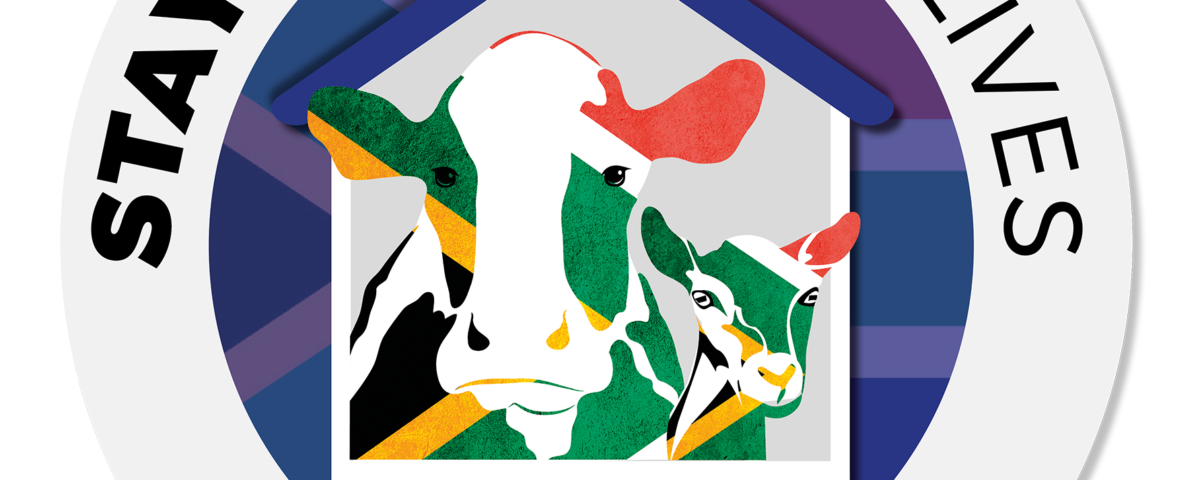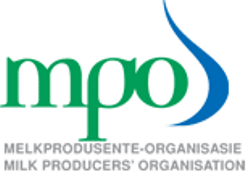
MPO POINTER 5/2 JULY 2021
Grain prices
The average concentrated feed cost (70% yellow maize and 30% soya) in 2018 was R2 913/tonne. In 2019, it was R3 489/tonne, in 2020 it was R4 193/tonne, and the average for the first six months of 2021 was R4 814/tonne. The percentage increase from 2018 to 2021 (year-to-date) is 65%. The graph below reflects prices from January 2019 to March 2022. The prices for July 2021 to March 2022 are the mark-to-market (MTM) prices for the respective future contracts of yellow maize and soya on the Johannesburg Stock Exchange (JSE).
Figure 1 Average concentrated feed cost (70% maize and 30% soya), JSE MTM on 29 June 2021
 This rapid increase in concentrate prices occurred in the same period during which farmer prices decreased by 18% in 2018 and then got sticky at low levels during 2019 and 2020. This situation created the current lower production of unprocessed milk. It was only in January 2021 that the farmer price for unprocessed milk managed to catch up with the rate of price increases in the secondary and tertiary markets. However, during the period 2018 to 2020, the damage was done in the primary dairy industry.
This rapid increase in concentrate prices occurred in the same period during which farmer prices decreased by 18% in 2018 and then got sticky at low levels during 2019 and 2020. This situation created the current lower production of unprocessed milk. It was only in January 2021 that the farmer price for unprocessed milk managed to catch up with the rate of price increases in the secondary and tertiary markets. However, during the period 2018 to 2020, the damage was done in the primary dairy industry.
Over the period January 2018 to May 2021, the free on board (FOB) price of urea (the main source of nitrogen used in the production of field crops and pastures) increased from R2 765/tonne to R4 900/tonne, a percentage increase of 77%. South Africa imports 59% of domestic urea consumption. The graph below illustrates the different price levels of urea over the period. The price peaked in February 2021 at R5 373/tonne.
Figure 2 Urea FOB price; source: Bloomberg
 The above price excludes freight and insurance costs. The following graph reflects freight costs.
The above price excludes freight and insurance costs. The following graph reflects freight costs.
Figure 3 Baltic dry index; source: Bloomberg
 The Baltic dry index reflects the cost of shipping dry commodities like grains and fertiliser. It is clear that this cost is at a record high. This record cost will result in dramatic further increases in the landed cost of urea.
The Baltic dry index reflects the cost of shipping dry commodities like grains and fertiliser. It is clear that this cost is at a record high. This record cost will result in dramatic further increases in the landed cost of urea.
Most of the above are due to the aftermath of the worldwide hard lockdown in 2020. During that time, production output and logistical capacity were lost. The world is now playing catch-up and in the process many commodity prices, transport costs, and product prices have rocketed.
Market conditions could change in the short term, but it would be prudent for buyers of unprocessed milk to carefully consider their stance towards winter premiums.
If, for example, grain prices remain at the current levels registered on the JSE commodity market, while the average producer price is reduced from the current level (R5,97/litre) to R5,67/litre (i.e. by 30 cents) due to winter premiums falling away, the milk price to feed price ratio in July 2021 will fall to below 1,3:1, which will influence unprocessed milk production negatively.
Bertus van Heerden, chief economist, Milk Producers’ Organisation (MPO)
Published on Friday, 2nd July 2021 - 15:38
Recent Posts
disclaimer









